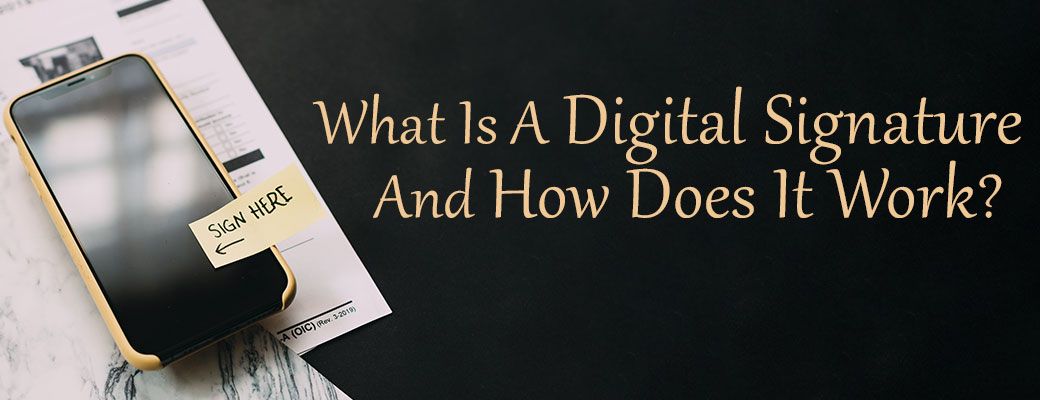What Is A Digital Signature And How Does It Work?

A digital signature is a term used to identify or sign electronic documents, which means that the process is analogous to a paper signature and uses a technology known as public key cryptography. While digital signatures are technical terms that define a cryptographic process that can be used to authenticate a data sequence, the term electronic signature (eSignature) is also a legal term that is defined by law.
Simply put, a digital signature refers to an electronic signature, which refers to an electronic method of signing a document or message. As the name suggests, digital signatures are bit and pixel characters–based on a stamp, and as the name suggests, it is a kind of signature. The only difference is that it includes the use of public key cryptography to sign and validate the mathematical validity of the data sequence (e.g. the digital version of an e-mail message).
This type of electronic signature should have the same characteristics as a digital signature, but cannot assign the electronic signature of the signatories to a particular signatory. A document that is digitally signed with the signature of digital signatures does not allow for any change in the future.
The person who creates the digital signature uses the signatory’s own private key to encrypt the signature – related data – and the only way to decrypt the data is to use its public key. If anyone is ever asked to have access to the private keys of a digital signatory (e.g. a private email address), they will receive them. The only way to compromise digital signatures is to give them to another person, but that can cause a lot of problems.
Just because a digitally signed document is from a person or company does not mean that it actually exists – you just need to do some math to prove that the digital signature is connected to the public key. The result will confirm that a legitimate private key was used to create it, and you can then take that and do some more math. To produce digital signatures, a malicious person can disguise himself as a sender by providing a fake email address (e.g. a private email account) and using it to create a digital signature.
In many cases, digital signatures are a legally accepted alternative to a handwritten signature or an official seal that confirms the authenticity of a signature. Digital signatures have many advantages over conventional signatures, such as the ability to be verified and greater security. They are intended to solve the problem of manipulation and imitation in digital communication. Digital signatures offer much more inherent security than stamps, and they are fingerprints and attachments on digital documents that guarantee their authenticity and integrity.
A digital signature is a hash value of the signer’s private key, which is encrypted with the public and private keys of all other signatories. To create a digital signature, the hash values are encrypted in the same way as the private key.
The private key is then generated from the number of characters representing the public key of the digital signature. The user who creates the digital signature uses his own private keys to encrypt all documents associated with the signature, as well as all other signatures.
The functionality of a digital signature is based on the combined functionality of public and private keys. The private key is used to create the digital signatures, while the public encryption keys are used to verify them. A transaction or message is sent with a public key and signed with a digital signature consisting of both keys, or vice versa.
Digital signatures work hand in hand with simpler hash functions. In theory, you could skip the hash function part and simply run a file with a private key through a signature algorithm and still create a digital signature.
If you need to consider whether a digital signature (eSignature) is authenticated, verified, wet signed and legally binding, it is up to the organization or service provider to choose between wet signature or digital signature. Digital signatures are a document that you sign without having to do so in person.
You bind your electronic identity cryptographically to an electronic document and cannot be copied from another document. Digital signature encryption helps verify the authenticity of the signature and ensures that the data associated with the signed document is secure.
